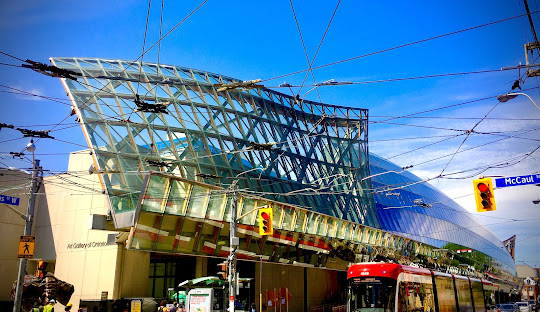
Toronto's Geography: A Land Shaped by Natural Features and Urban Expansion
Posted by on
Toronto, covering an expansive 630 square kilometers (243 square miles), is a city shaped by its natural geography and the ambitious urban development that transformed its landscape. With a maximum north-south distance of 21 kilometers (13 miles) and an east-west span of 43 kilometers (27 miles), Toronto's location on the northwestern shore of Lake Ontario provides it with a unique position, including a 46-kilometer (29-mile) waterfront.
The Toronto Islands, a natural peninsula until a storm in 1858, and the Port Lands extend into Lake Ontario, offering a sheltered harbor. The city’s geographical limits stretch from Lake Ontario to the south, with boundaries defined by Etobicoke Creek, Eglinton Avenue, and the Rouge River to the west, north, and east. The city’s topography is primarily flat with some gentle hills, but the landscape is dramatically interrupted by the Toronto ravine system, shaped by creeks and rivers like the Humber, Don, and Rouge Rivers. These ravines have been preserved as parklands, offering recreational trails through the valleys that cut through the city.
Toronto’s elevation rises steadily from the shoreline, with the lowest point at 76.5 meters (251 feet) above sea level near Lake Ontario, and increasing to 209 meters (686 feet) near York University in the city’s north end. The city’s hills, though not extreme, are prominent in areas like midtown Toronto and the Silverthorn and Fairbank neighborhoods. These ridges offer occasional glimpses of Lake Ontario, even from areas as far inland as Eglinton Avenue.
The city's other distinctive geographical feature is the Iroquois Shoreline, an escarpment formed by the remnants of Glacial Lake Iroquois during the last ice age. The Scarborough Bluffs, stretching from Victoria Park Avenue to the mouth of Highland Creek, represent the most notable section of this escarpment. Other observable segments are located near St. Clair Avenue and north of Davenport Road.
The Toronto waterfront has undergone significant transformation, particularly since the late 19th century. The land along the northern shore of the harbor has been expanded through landfill, and much of the Port Lands were filled in early in the 20th century. This dramatic reshaping of the landscape has made room for recreational areas like Humber Bay Park. Further changes were made to create the artificial Outer Harbour, and in the 2020s, a new natural mouth for the Don River was constructed, forming a new island, Ookwemin Minising.
Toronto’s geography reflects its evolving history and urban growth, blending natural beauty with human ingenuity to create a dynamic urban environment.